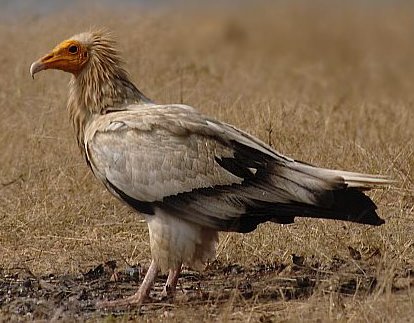Facts About Egyptian vulture
The Egyptian vulture, also known as the white scavenger vulture or pharaoh's chicken, is a remarkable bird that stands out within the vulture family. It is the sole representative of the Neophron genus and boasts a vast range that extends from the Iberian Peninsula and North Africa to India. In flight, it is easily identifiable by its distinctive underwing pattern and wedge-shaped tail.
These vultures primarily feed on carrion but are not finicky; they also consume small mammals, birds, reptiles, and even bird eggs. However, the 20th century was particularly harsh on them, as their numbers dwindled due to hunting, accidental poisoning, and collisions with power lines.
Egyptian vultures are unique not only in appearance but also in behavior. Their adult plumage is a striking combination of white with black flight feathers, and they possess a long, slender bill. These birds are notably intelligent, utilizing tools such as pebbles to crack open eggs and twigs to gather wool for their nests. They typically exhibit monogamous behavior, often returning to the same nesting sites year after year.
Despite their adaptability, Egyptian vultures face numerous threats from human activities. Power lines, hunting, poisoning, and lead contamination have significantly impacted their populations in Europe, the Middle East, and India. Conservation efforts are underway to safeguard these vultures, particularly in regions like the Canary Islands. Initiatives include establishing safe feeding sites and addressing issues such as lead poisoning and habitat loss.

 Afghanistan
Afghanistan